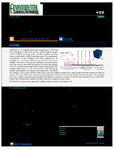Multiplex Lateral Flow Assay and the Sample Preparation Method for the Simultaneous Detection of Three Marine Toxins
| dc.contributor.author | Mills, C | |
| dc.contributor.author | Dillon, MJ | |
| dc.contributor.author | Kulabhusan, PK | |
| dc.contributor.author | Senovilla-Herrero, D | |
| dc.contributor.author | Campbell, K | |
| dc.date.accessioned | 2023-01-26T17:19:57Z | |
| dc.date.available | 2023-01-26T17:19:57Z | |
| dc.date.issued | 2022-09-06 | |
| dc.identifier.issn | 0013-936X | |
| dc.identifier.issn | 1520-5851 | |
| dc.identifier.uri | http://hdl.handle.net/10026.1/20212 | |
| dc.description.abstract |
A multiplex lateral flow immunoassay (LFA) has been developed to detect the primary marine biotoxin groups: amnesic shellfish poisoning toxins, paralytic shellfish poisoning toxins, and diarrhetic shellfish poisoning toxins. The performance characteristics of the multiplex LFA were evaluated for its suitability as a screening method for the detection of toxins in shellfish. The marine toxin-specific antibodies were class-specific, and there was no cross-reactivity between the three toxin groups. The test is capable of detecting all three marine toxin groups, with working ranges of 0.2–1.5, 2.5–65.0, and 8.2–140.3 ng/mL for okadaic acid, saxitoxin, and domoic acid, respectively. This allows the multiplex LFA to detect all three toxin groups at the EU regulatory limits, with a single sample extraction method and dilution volume. No matrix effects were observed on the performance of the LFA with mussel samples spiked with toxins. The developed LFA uses a simple and pocket-sized, portable Cube Reader to provide an accurate result. We also evaluated the use of this Cube Reader with commercially available monoplex lateral flow assays for marine toxins. | |
| dc.format.extent | 12210-12217 | |
| dc.format.medium | Print-Electronic | |
| dc.language | en | |
| dc.language.iso | eng | |
| dc.publisher | American Chemical Society (ACS) | |
| dc.subject | marine toxins | |
| dc.subject | lateral flow | |
| dc.subject | shellfish | |
| dc.subject | saxitoxin | |
| dc.subject | domoic acid | |
| dc.subject | okadaic acid | |
| dc.title | Multiplex Lateral Flow Assay and the Sample Preparation Method for the Simultaneous Detection of Three Marine Toxins | |
| dc.type | journal-article | |
| dc.type | Journal Article | |
| plymouth.author-url | https://www.webofscience.com/api/gateway?GWVersion=2&SrcApp=PARTNER_APP&SrcAuth=LinksAMR&KeyUT=WOS:000841410200001&DestLinkType=FullRecord&DestApp=ALL_WOS&UsrCustomerID=11bb513d99f797142bcfeffcc58ea008 | |
| plymouth.issue | 17 | |
| plymouth.volume | 56 | |
| plymouth.publication-status | Published | |
| plymouth.journal | Environmental Science & Technology | |
| dc.identifier.doi | 10.1021/acs.est.2c02339 | |
| plymouth.organisational-group | /Plymouth | |
| plymouth.organisational-group | /Plymouth/Faculty of Health | |
| plymouth.organisational-group | /Plymouth/Faculty of Health/Peninsula Medical School | |
| plymouth.organisational-group | /Plymouth/Users by role | |
| plymouth.organisational-group | /Plymouth/Users by role/Academics | |
| dc.publisher.place | United States | |
| dcterms.dateAccepted | 2022-07-29 | |
| dc.rights.embargodate | 2023-1-28 | |
| dc.identifier.eissn | 1520-5851 | |
| dc.rights.embargoperiod | Not known | |
| rioxxterms.versionofrecord | 10.1021/acs.est.2c02339 | |
| rioxxterms.licenseref.uri | http://www.rioxx.net/licenses/all-rights-reserved | |
| rioxxterms.type | Journal Article/Review |


